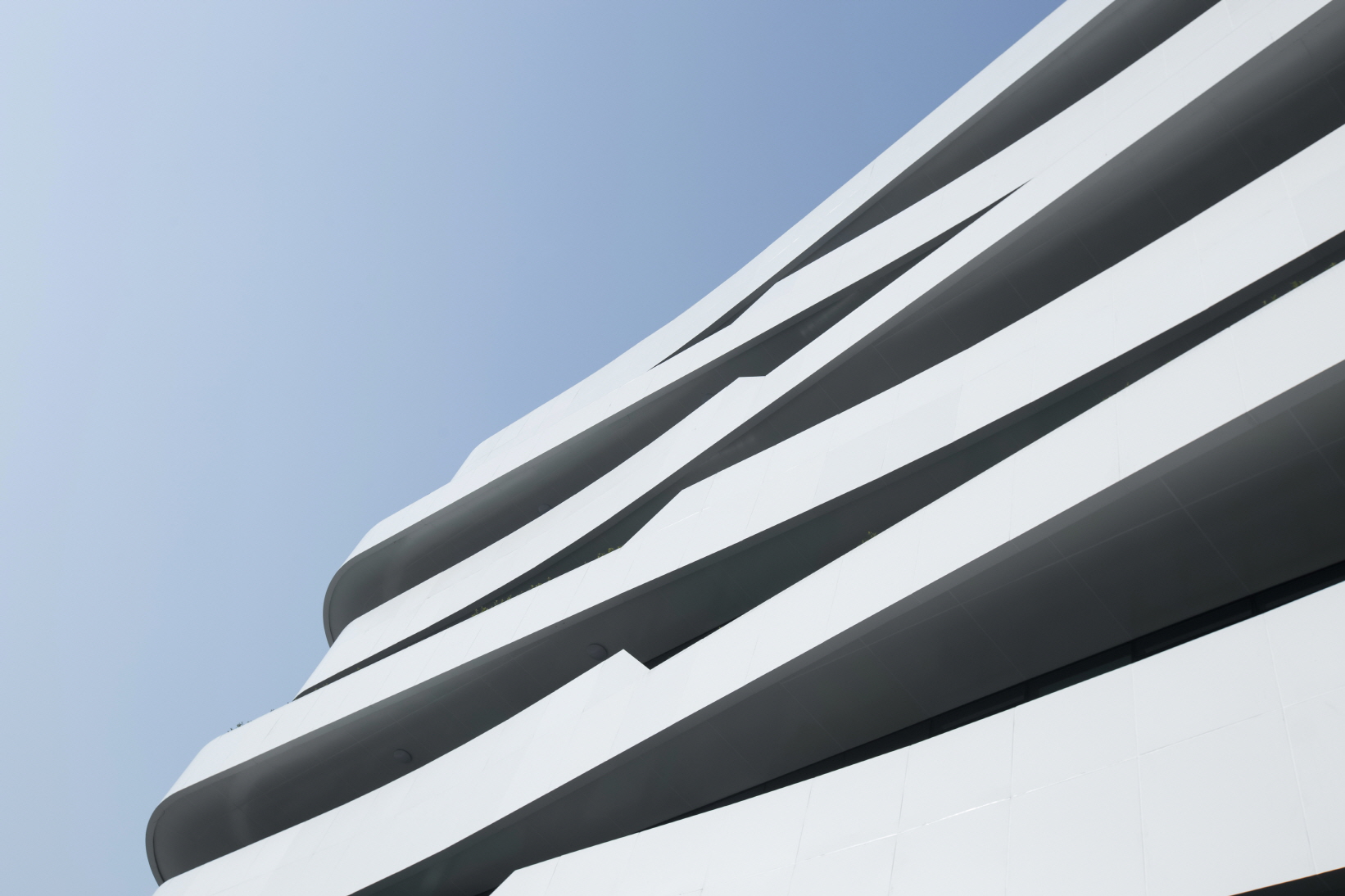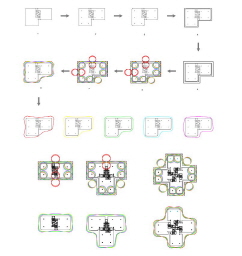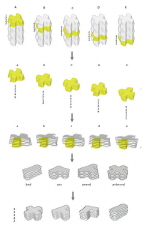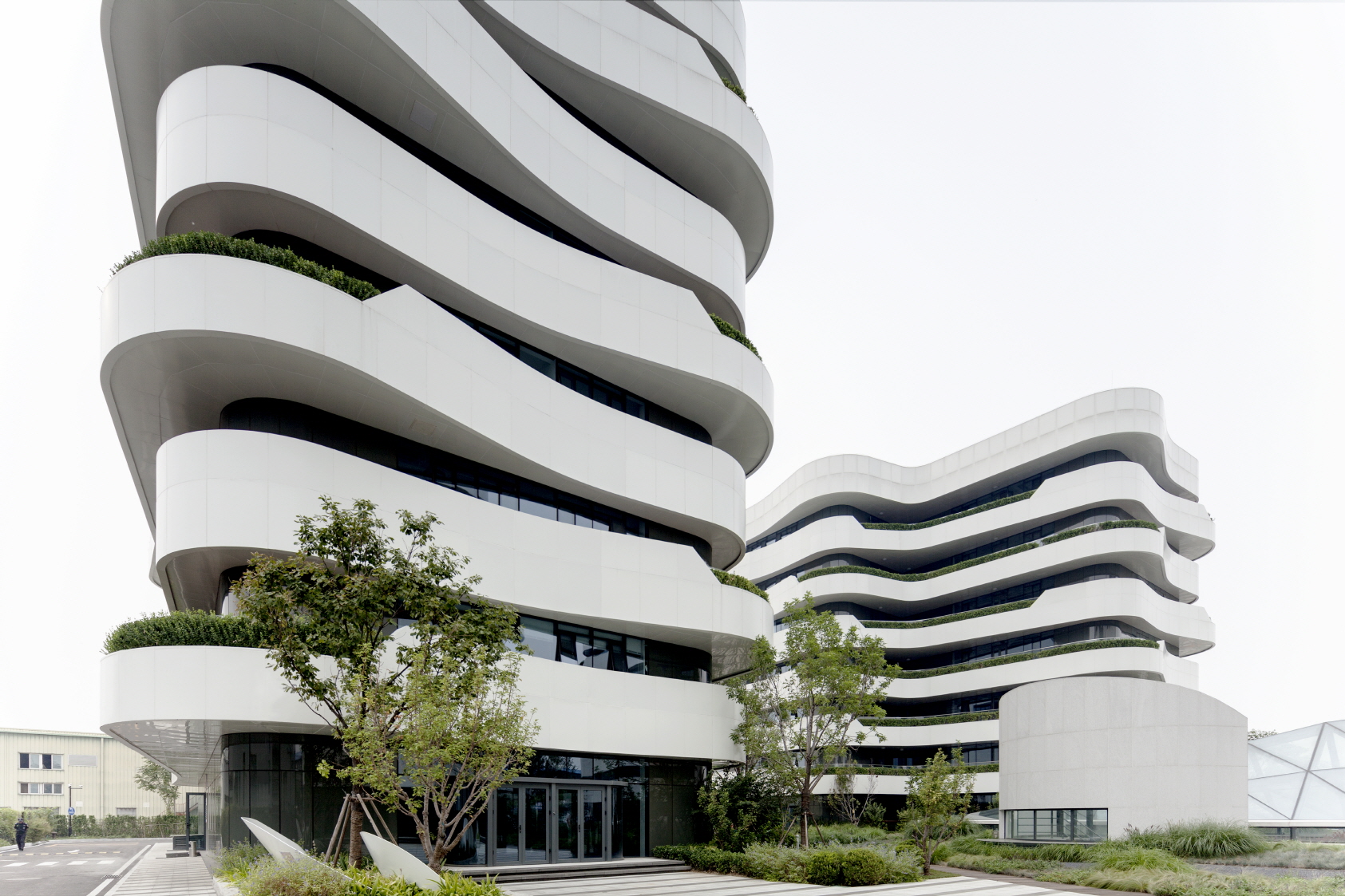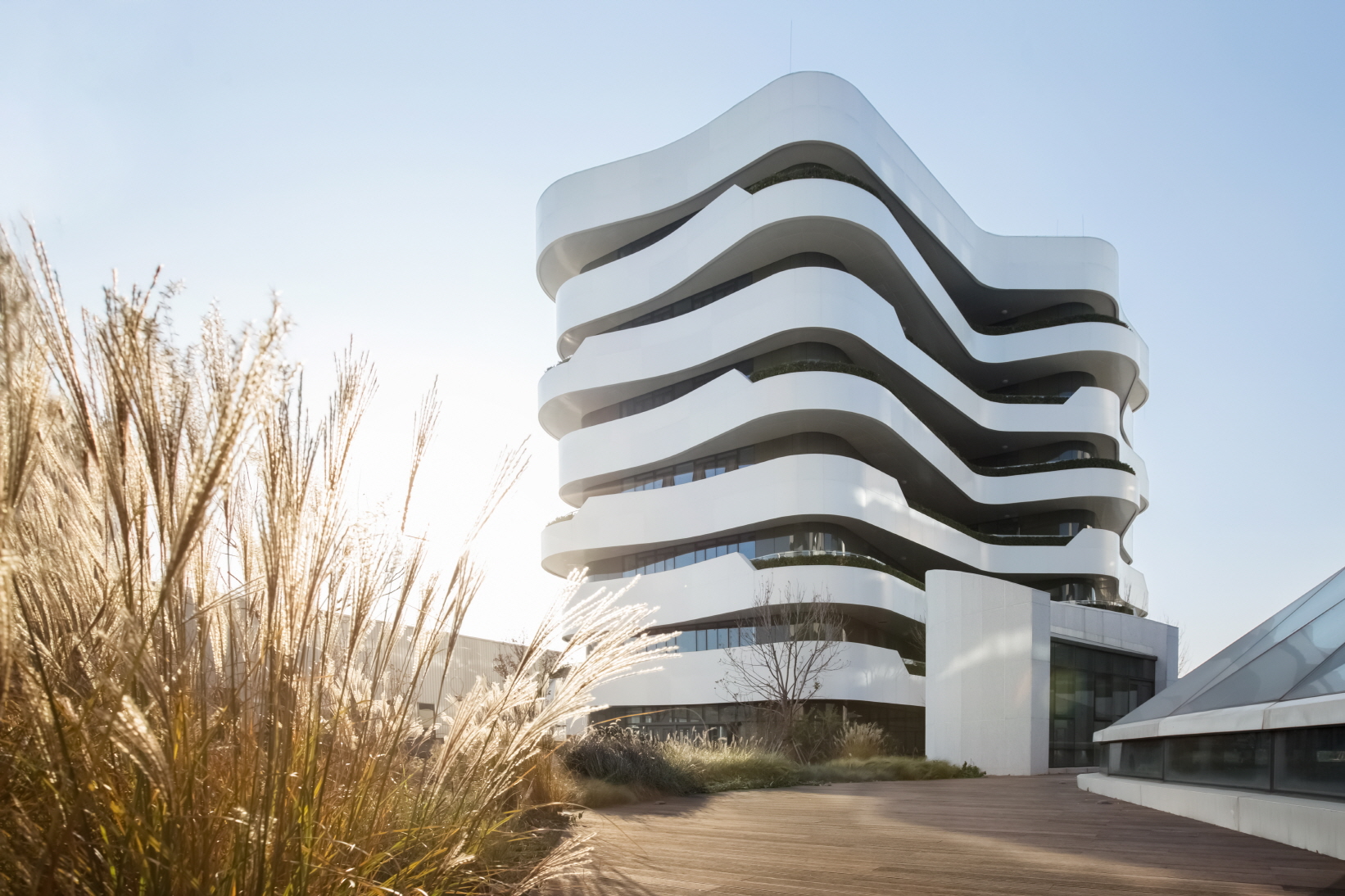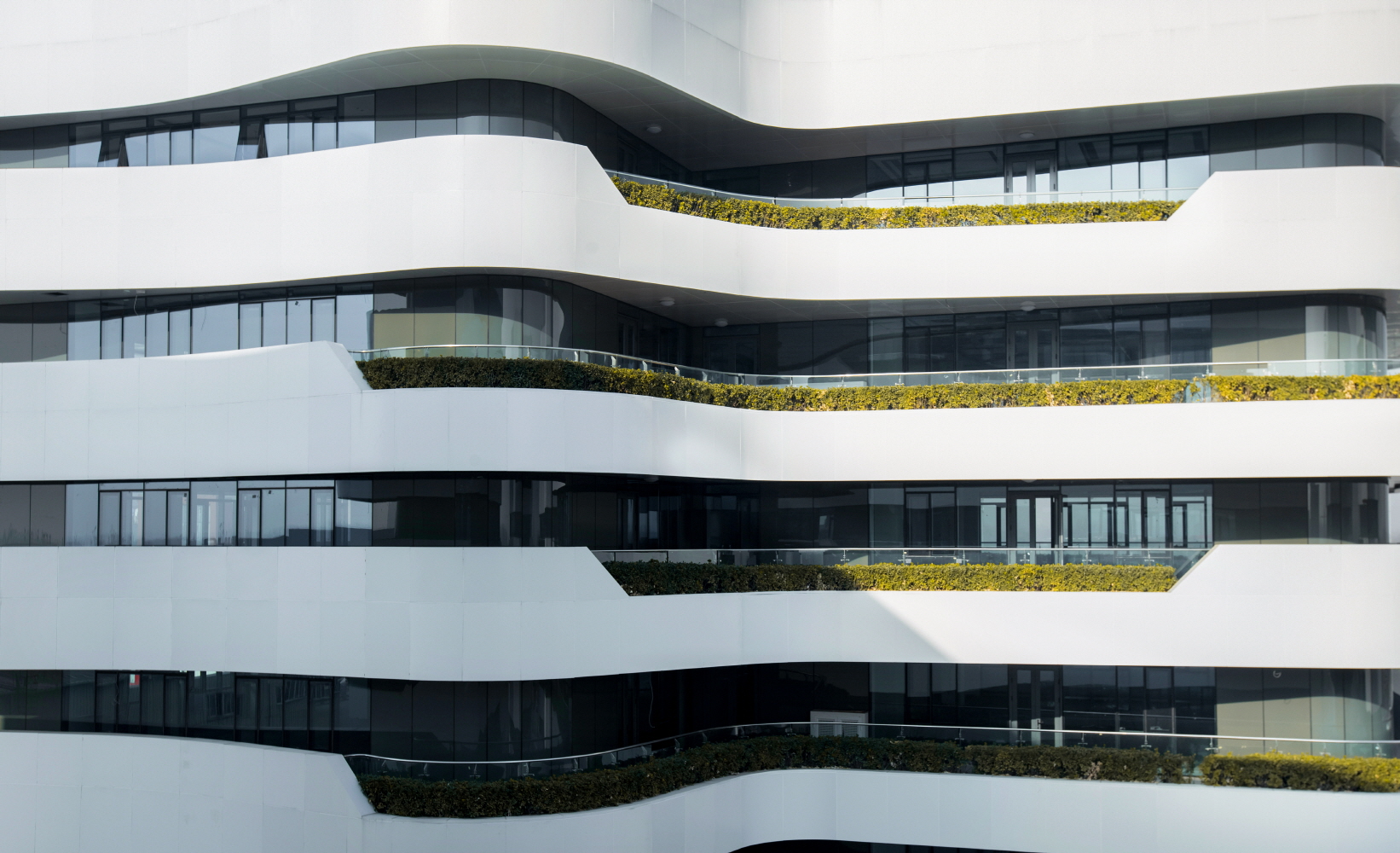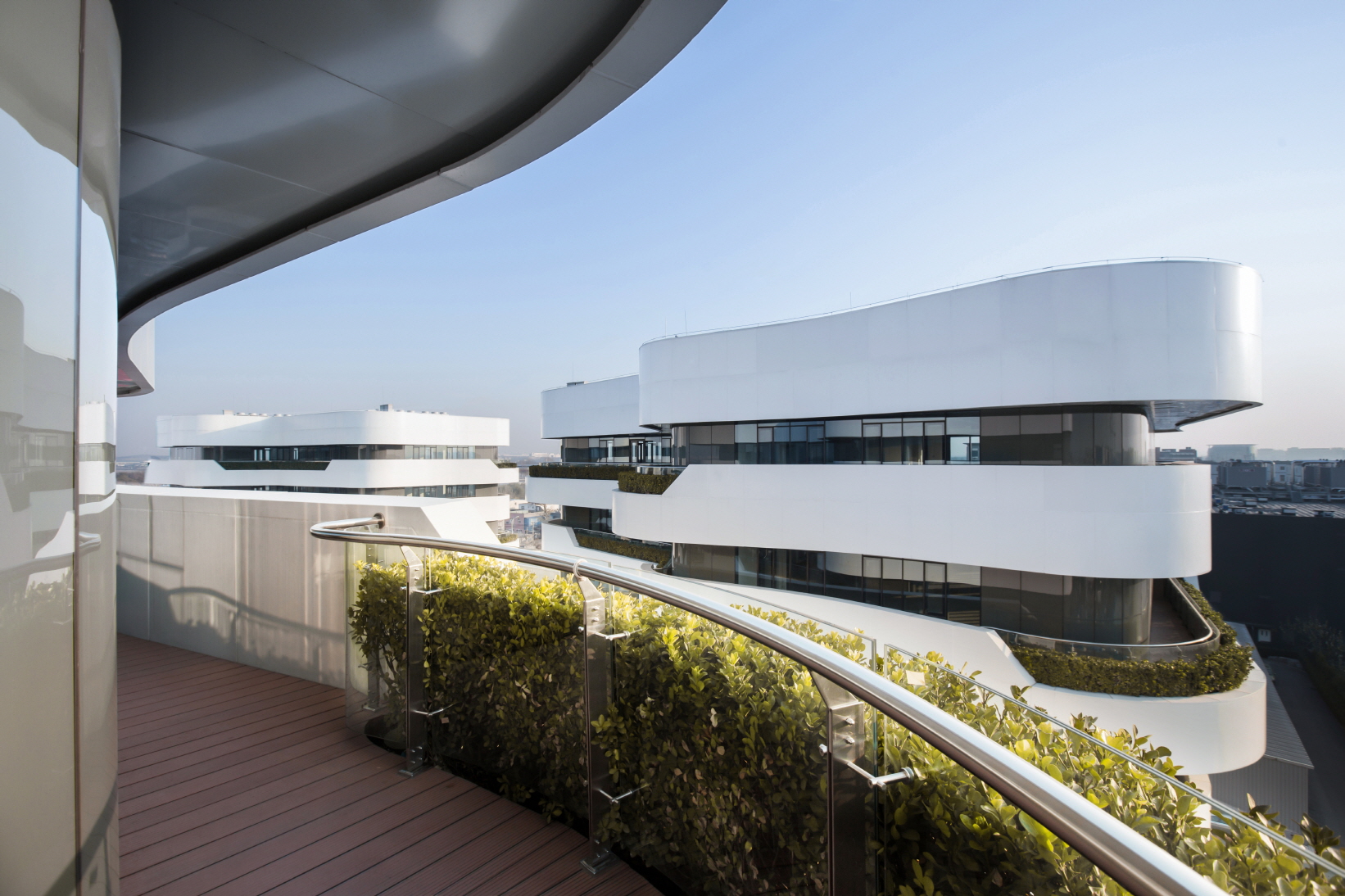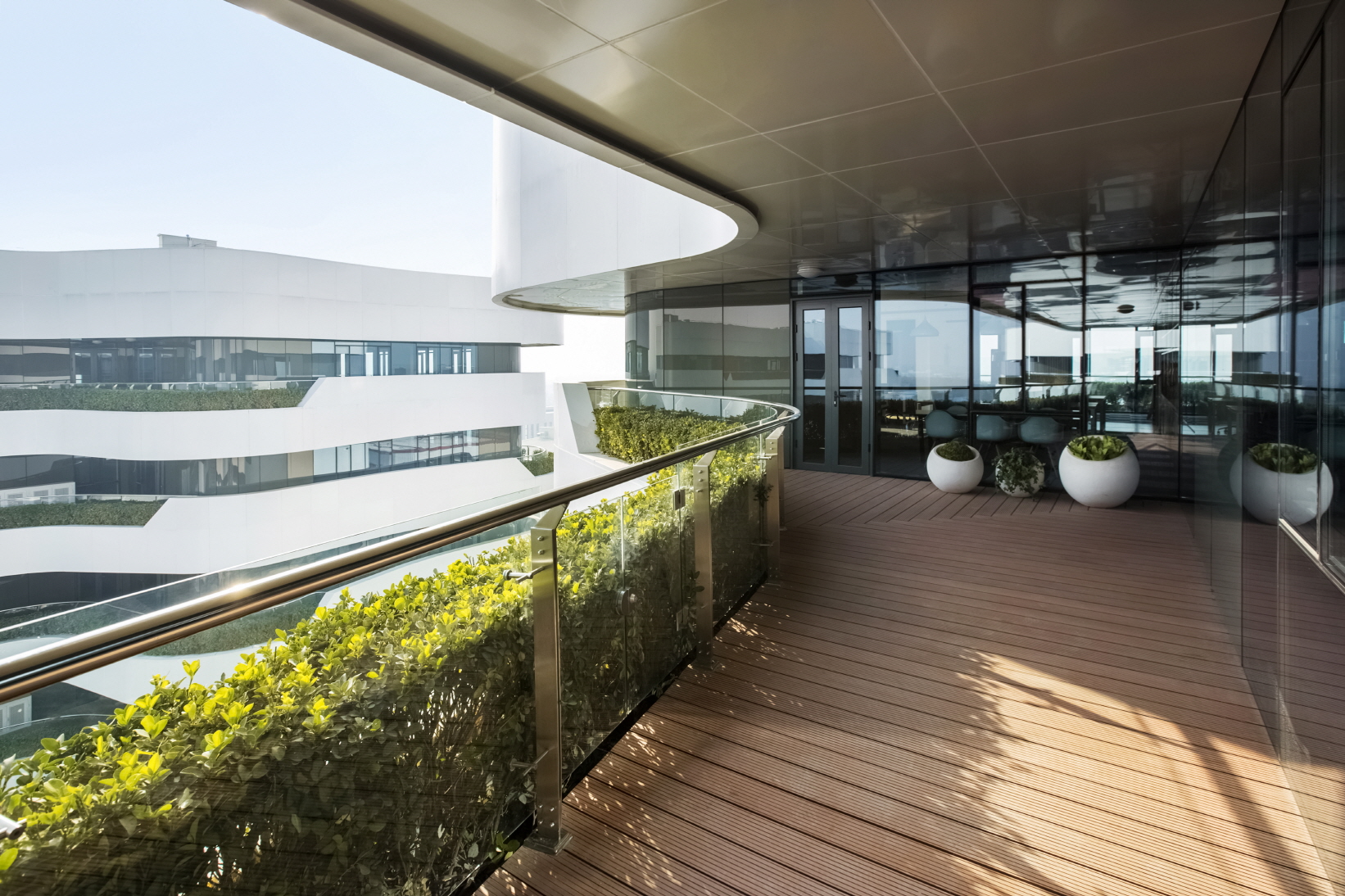AD
●● 멋진 세상 속 건축디자인_ 중정을 중심으로 절묘하게 조합된 4개의 유기적인 L자형 매스, ‘베이징 티안윤 오피스 콤플렉스(Tian Yun Affordable Office Complex)’… 5가지 유형의 곡면 변화를 통해 차별화된 입면을 구성해
In the outskirts of the second and third-tier cities in China, some areas have been defined as industrial by the governments to accommodate manufactures to serve for the city’s development. However, due to rapid urbanization, more strict environmental pollution control and industrial upgrading, large-scale manufacture plants must move away from major cities. Consequently, new industries are in demand to fulfill these industrial sites in the urban fringe, and the main industries and functions that are filling up the spaces are now research and technology businesses relevant to manufacturing industries.
Our client is a private investment company who has procured the land from the local government after conducting market analysis to develop products of office architecture that meet market demand: an office park that contains mainly single office units and with a fraction for commercial facilities. This is the premise of the design. Target sales and leasing tenants of the office compound are small and medium-size private enterprises. Some of these companies need to upgrade to bigger cities from fourth or fifth-tier cities. They would choose to rent or buy an independent office building of their own on the fringe of city at an affordable price than paying for expensive downtown rent. Moreover, the large-scale industrial plants aforementioned that have moved away still need some functions such as showrooms or clearing houses to remain at the previous location to maintain the bond with big cities. Such market demand hence becomes the backbone of business operation of the office park.
The influx of new businesses will bring unprecedentedly higher tax revenue to local governments. Thus the local governments are more than willing to offer the land to real estate developers with rational proposals at a bargain price, which makes it possible for the sales and leasing prices of the end product affordable to private enterprises. This business model benefits local government, developer and private companies, creating a virtuous circle under market mechanism. Tianyun Office complex is a principal and sample complex completed in Beijing. It is used in testing markets to future large-scale implementations in other cities.
Our design started from studying the basic office unit. The concept of Modularization is applied in the design of office unit. The floor plan is defined by either one or two 8.4m by 8.4m structure frames with an additional 3.3m cantilever to facilitate office use. Combined with it is an efficient functional core that has solved the puzzle of connecting office units and maximizing the office space use to achieve a room rate at minimum 90%. Units can be arranged to form several basic geometrical forms: I-shaped, T-shaped and cross-shaped, which can be mixed and configured to achieve rich architectural forms and urban spaces. The height of each building can be 5 to 7 floors above ground.
The design of Tianyun complex is based on the characteristic of the site. L-shaped form was chosen from the four basic geometries to enclose the site to generate a central plaza. Each L-shape building is made of two office units. The buildings have seven floors above ground and one basement level. The total floor area of the large unit is 2600 sqm, while the small unit is 1900 sqm.
The architecture facade is also based on modularization. Rounded corner emphasizes fluidity as well as symbolizing harmony in Chinese traditional culture. We have made analysis on the gradual changes of five types of curve boundaries in the vertical direction and then reduced to an alternate repetitions of two curve boundaries. An office unit with less modules is to maximize the efficiency of duplication and to minimize construction cost when high-frequency repetition is anticipated in a bigger scale development. The alteration of two curve boundaries is sufficient in providing more sunlight to the interior while enriching an individual’s experience of spatial change on the balcony.
The modularization system saved cost in construction, so the balconies with planters around is affordable within the limit of the budget. The curved balconies with planters embrace the glazed office spaces and creates fluid social space during work breaks. Due to the cold weather in the north part of China, instead of applying deciduous ivy, euonymus japonicus was chosen to create plant terraces to achieve vertical greening which can survive through the cold winter. Each unit has a compact functional core, the glass curtain walls reach the floor on each level to maximize natural sunlight and view for the users. The clean office space offers maximum flexibility for future tenants when they envision their own interior design. Parking and restaurants are built underground. The glass roof in the plaza provides daylight for underground restaurants. All the materials used are domestic materials, which helped to control the budget.
Since completion of the Tianyun Complex, it has received great results in test marketing. PRAXiS d’ARCHITECTURE is now working on the next phase of design using this product as the main typology to incorporate it into a land parcel of approximately 200 acres.
아키텍처 프랙시스는 문화 및 물리적 맥락에 대한 이해를 바탕으로 건축과 주변 환경을 통합하는 독창적이고 조화로운 접근 방식을 제안하고 있다. 디 샤후아 대표건축가는 지역 특성에 맞는 경제적이고 환경 친화적인 재료를 통해 실용적이면서 효율적인 프랙시스 만의 특별한 공간을 창출하고자 한다. >>Lead Architect_ Di Shaohua, 자료_ PRAXiS d’ARCHITECTURE, Photos by Feng Shuxian, He Lian, Zhou Ruogu, 기사 출처_ 에이앤뉴스 AN NEWS(ANN 뉴스센터) 제공
안정원(비비안안 Vivian AN) 에이앤뉴스 ANN 발행인 겸 대표이사, 한양대학교 실내건축디자인학과 겸임교수
제공_ 에이앤뉴스그룹 ANN NEWS GROUP(에이앤뉴스_ 건축디자인 대표 신문사 ‧ 에이앤프레스_건설지, 건설엔지니어링북, 건설스토리북, 건설백서 전문출판사)
Architecture Design: PRAXiS d’ARCHITECTURE
Team: Di Shaohua, Liu Xing, Feng Jiancheng, Lu Dongxia, Huo Junlong, Jiang Bo, Xu Xinxin, Zhan Enhe
Construction Documentation: China Construction Engineering Design Group Co.,LTD.
Client: Gold Concord Investment Co.,LTD.
Interior Design(600 sqm sample office): Lin Zhenzhong, STID Group
Landscape Design: Alex Camprubi,Arppa Design Studio
Lighting Design: Beijing Kai Shun Teng Engineering Consultant LTD
Location: Shunyi District, Beijing
Status: Completed
Size: 23,600 sqm
Photographer: Feng Shuxian, He Lian, Zhou Ruogu
[저작권자(c) YTN 무단전재, 재배포 및 AI 데이터 활용 금지]
In the outskirts of the second and third-tier cities in China, some areas have been defined as industrial by the governments to accommodate manufactures to serve for the city’s development. However, due to rapid urbanization, more strict environmental pollution control and industrial upgrading, large-scale manufacture plants must move away from major cities. Consequently, new industries are in demand to fulfill these industrial sites in the urban fringe, and the main industries and functions that are filling up the spaces are now research and technology businesses relevant to manufacturing industries.
Our client is a private investment company who has procured the land from the local government after conducting market analysis to develop products of office architecture that meet market demand: an office park that contains mainly single office units and with a fraction for commercial facilities. This is the premise of the design. Target sales and leasing tenants of the office compound are small and medium-size private enterprises. Some of these companies need to upgrade to bigger cities from fourth or fifth-tier cities. They would choose to rent or buy an independent office building of their own on the fringe of city at an affordable price than paying for expensive downtown rent. Moreover, the large-scale industrial plants aforementioned that have moved away still need some functions such as showrooms or clearing houses to remain at the previous location to maintain the bond with big cities. Such market demand hence becomes the backbone of business operation of the office park.
The influx of new businesses will bring unprecedentedly higher tax revenue to local governments. Thus the local governments are more than willing to offer the land to real estate developers with rational proposals at a bargain price, which makes it possible for the sales and leasing prices of the end product affordable to private enterprises. This business model benefits local government, developer and private companies, creating a virtuous circle under market mechanism. Tianyun Office complex is a principal and sample complex completed in Beijing. It is used in testing markets to future large-scale implementations in other cities.
Our design started from studying the basic office unit. The concept of Modularization is applied in the design of office unit. The floor plan is defined by either one or two 8.4m by 8.4m structure frames with an additional 3.3m cantilever to facilitate office use. Combined with it is an efficient functional core that has solved the puzzle of connecting office units and maximizing the office space use to achieve a room rate at minimum 90%. Units can be arranged to form several basic geometrical forms: I-shaped, T-shaped and cross-shaped, which can be mixed and configured to achieve rich architectural forms and urban spaces. The height of each building can be 5 to 7 floors above ground.
The design of Tianyun complex is based on the characteristic of the site. L-shaped form was chosen from the four basic geometries to enclose the site to generate a central plaza. Each L-shape building is made of two office units. The buildings have seven floors above ground and one basement level. The total floor area of the large unit is 2600 sqm, while the small unit is 1900 sqm.
The architecture facade is also based on modularization. Rounded corner emphasizes fluidity as well as symbolizing harmony in Chinese traditional culture. We have made analysis on the gradual changes of five types of curve boundaries in the vertical direction and then reduced to an alternate repetitions of two curve boundaries. An office unit with less modules is to maximize the efficiency of duplication and to minimize construction cost when high-frequency repetition is anticipated in a bigger scale development. The alteration of two curve boundaries is sufficient in providing more sunlight to the interior while enriching an individual’s experience of spatial change on the balcony.
The modularization system saved cost in construction, so the balconies with planters around is affordable within the limit of the budget. The curved balconies with planters embrace the glazed office spaces and creates fluid social space during work breaks. Due to the cold weather in the north part of China, instead of applying deciduous ivy, euonymus japonicus was chosen to create plant terraces to achieve vertical greening which can survive through the cold winter. Each unit has a compact functional core, the glass curtain walls reach the floor on each level to maximize natural sunlight and view for the users. The clean office space offers maximum flexibility for future tenants when they envision their own interior design. Parking and restaurants are built underground. The glass roof in the plaza provides daylight for underground restaurants. All the materials used are domestic materials, which helped to control the budget.
Since completion of the Tianyun Complex, it has received great results in test marketing. PRAXiS d’ARCHITECTURE is now working on the next phase of design using this product as the main typology to incorporate it into a land parcel of approximately 200 acres.
아키텍처 프랙시스는 문화 및 물리적 맥락에 대한 이해를 바탕으로 건축과 주변 환경을 통합하는 독창적이고 조화로운 접근 방식을 제안하고 있다. 디 샤후아 대표건축가는 지역 특성에 맞는 경제적이고 환경 친화적인 재료를 통해 실용적이면서 효율적인 프랙시스 만의 특별한 공간을 창출하고자 한다. >>Lead Architect_ Di Shaohua, 자료_ PRAXiS d’ARCHITECTURE, Photos by Feng Shuxian, He Lian, Zhou Ruogu, 기사 출처_ 에이앤뉴스 AN NEWS(ANN 뉴스센터) 제공
안정원(비비안안 Vivian AN) 에이앤뉴스 ANN 발행인 겸 대표이사, 한양대학교 실내건축디자인학과 겸임교수
제공_ 에이앤뉴스그룹 ANN NEWS GROUP(에이앤뉴스_ 건축디자인 대표 신문사 ‧ 에이앤프레스_건설지, 건설엔지니어링북, 건설스토리북, 건설백서 전문출판사)
Architecture Design: PRAXiS d’ARCHITECTURE
Team: Di Shaohua, Liu Xing, Feng Jiancheng, Lu Dongxia, Huo Junlong, Jiang Bo, Xu Xinxin, Zhan Enhe
Construction Documentation: China Construction Engineering Design Group Co.,LTD.
Client: Gold Concord Investment Co.,LTD.
Interior Design(600 sqm sample office): Lin Zhenzhong, STID Group
Landscape Design: Alex Camprubi,Arppa Design Studio
Lighting Design: Beijing Kai Shun Teng Engineering Consultant LTD
Location: Shunyi District, Beijing
Status: Completed
Size: 23,600 sqm
Photographer: Feng Shuxian, He Lian, Zhou Ruogu
[저작권자(c) YTN 무단전재, 재배포 및 AI 데이터 활용 금지]
